
Quantum Efficiency Tester
PL/EL Integrated System
PV-Reflectumeter
3D Confocal Microscope
In-Line Four Point Probe Tester
Four Point Probe Tester
In-Line Thin Film Thickness Tester
Raman Spectrometer
FTIR Spectrometer
Spectrophotometer
Automatic Spectroscopic Ellipsometer
Contact Resistance Tester
Ultra depth of field 3D microscope
Auto Visual Tester
VMM PV Vision Measuring Machine
Solar Cell Horizontal Tensile Tester
Steady State Solar Simulator for Solar Cell
Solar Cell UV Aging Test Chamber
Solar Cell Comprehensive Tensile Tester
Visual Inspection Tester
Wet Leakage Current Tester
PV Module EL Tester
PV Module UV Preconditioning Chamber
Steady State Solar Simulator for PV Module
Current Continuous Monitor
Potential Induced Degradation Test
Bypass Diode Tester
LeTID Test System
Reverse Current Overload Tester
Impulse Voltage Tester
Hipot Insulation Tester
Ground Continuity Tester
Hipot Insulation Ground Tester
Damp Heat Test Chamber
Humidity Freeze Test
Thermal Cycle Test Chamber
Dynamic Mechanical Load Tester
Static Mechanical Load Tester
Hail Impact Tester
Robustness of Termination Tester
Module Breakage Tester
Cut Susceptibility Tester
Peel Shear Strength Tester
Universal Testing Machine (Single-arm)
Universal Testing Machine (Double-arm)
Glass Transmittance Tester
Acetic Acid Test Chamber
EVA Degree of Crosslinking Test System
Junction Box Comprehensive Tester
Drop ball tester
Semi-automatic scanning four-probe tester
Stylus Profilometer
Maximum Power Point Tracker
Perovskite Glass Transmittance Tester
Perovskite P1 Laser Scribing Multifunctional Testing Machine
Perovskite Online PL Tester
Perovskite Online Sheet Resistance Tester
Online Perovskite Film Thickness Tester
Perovskite Process Inspection Workstation
Portable IV Curve Tester
Portable EL Tester
Portable Thermal Imaging Tester
Solar Module Multi-Channel Testing System
PV Inverter Power Quality Tester
Drone EL Tester
IV Tester
IVEL Cell Sorting Machine
MPPT for Perovskite Solar Cell Stability Testing
Date : 2024-10-12Views : 280
Perovskite solar cells have attracted widespread attention due to their high efficiency and low-cost manufacturing potential, but stability challenges have hindered commercialization. There are many factors that affect their stability, so specialized equipment is required for extensive operational stability measurements. MPPT testing can evaluate the energy conversion efficiency and stability of perovskite cells. Millennial Maximum Power Point Tracker provides strong support for the research of perovskite solar cells with its advanced technology and multifunctional design. Through perturbation algorithms and A+AA+ grade LED solar simulators, the system can accurately monitor and optimize the maximum power output of the cell, ensuring the stability of cell performance during long-term testing.
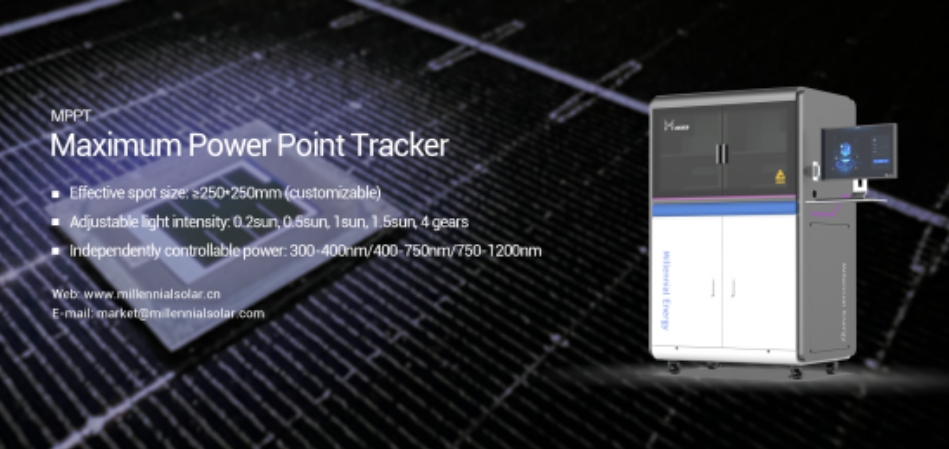
PSC photovoltaic module packaging structure
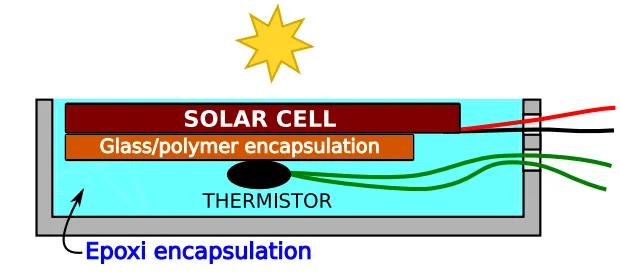
The PSCs were assembled using a commercial kit, annealed and humidity-assisted thermally treated, and packaged with pre-laminated glass covers, sealing gaskets, soldered copper wires, NTC thermistors, etc. to ensure the robustness, reproducibility, and stability of the device.
MPPT test on PSC
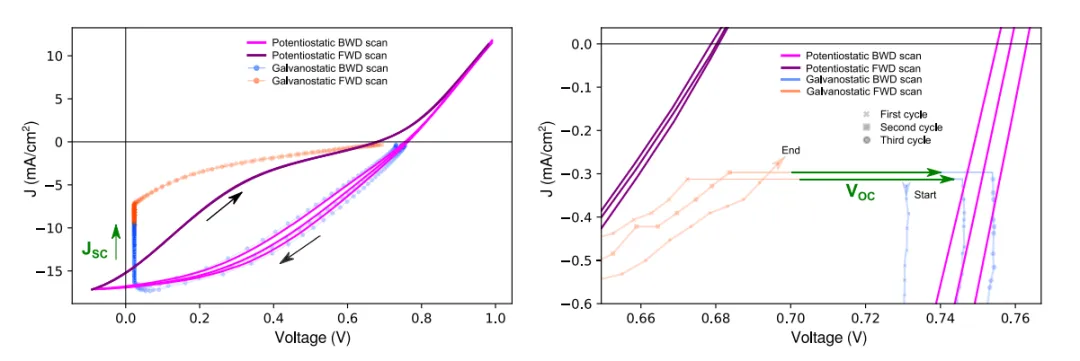
Comparison of constant current and constant potential JV measurements in PSCs
JV measurements of a highly hysteretic triple mesoscopic PSC were performed using potentiostatic and galvanostatic techniques, respectively. Current-voltage curves were recorded during the measurements to observe changes in the electrical characteristics of the PSC under different measurement methods. Both measurement methods captured the hysteresis of the PSC, but the current of the forward scan FWD curve in the galvanostatic measurement was significantly lower than that in the potentiostatic measurement. The effective scan rate and pretreatment time of the PSC in the galvanostatic measurement were different from those in the potentiostatic measurement, resulting in differences in the JV curves. Dynamic changes in Jsc: When the N-MOSFET is set to a low resistance state, it decreases (as shown by the green arrow). This indicates that during the galvanostatic measurement, the short-circuit current of the battery changes as the resistance state of the N-MOSFET changes. Changes in Voc: Under different measurement conditions, the open-circuit voltage changes accordingly. This change reflects the response of the electrical characteristics and charge transfer processes inside the PSC to the external measurement conditions.
MPPT measurement using the potentiostatic method in PSCs
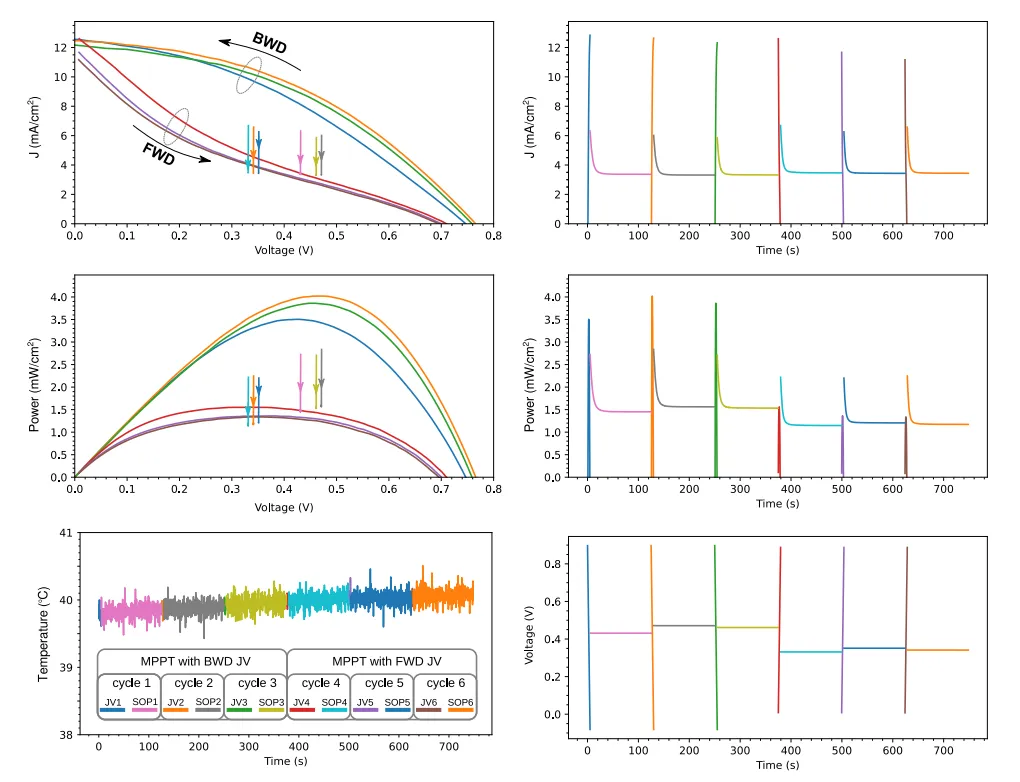
Six cycles of MPPT in PSC
Six cycles of MPPT (maximum power point tracking) in PSC using the constant potential method, including JV characteristics, power output curves, temperature changes, and changes in parameters such as current density, power and voltage at different stages.
An LED solar simulator was used to provide illumination, and the JV curve was converted to a power-voltage curve to determine Vmpp, and then the potentiostat was set to start the SOP (stable output power) stage for 120 seconds. The entire test process included six cycles.
Under different working conditions, the current output capacity of PSC will change, and hysteresis has a certain effect on the stability of current density. In the SOP stage, the power will gradually decrease over time, which is mainly caused by the reduction of current density output. The voltage is relatively stable, but the voltage value will also vary under different cycles and scanning directions, which further illustrates the sensitivity of the electrical performance of PSC to the test conditions.
The process and results of MPPT testing in PSC using the constant potential method reveal the electrical performance characteristics of PSC under different working conditions and the influence of hysteresis on power output.
MPPT measurement using constant current method in PSC
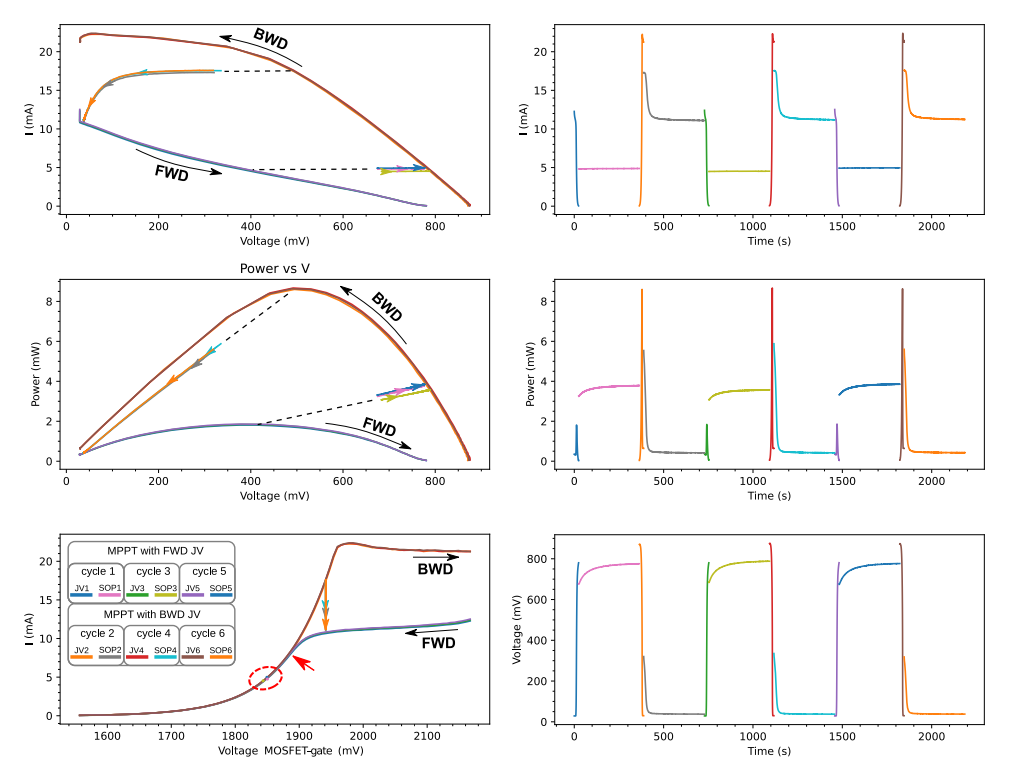
Six cycles of MPPT using the constant current method in PSC
The PSC was tested by constant current method, using white LED as light source. During the test, six constant current JV-SOP cycles were alternately extracted from the JV curve of FWD (forward scan) or BWD (reverse scan) type, and then the SOP stage was performed under constant current method, and the duration of SOP stage was 360 seconds.
There are differences in the JV curves of PSC with different scan directions under constant current method, reflecting the hysteresis phenomenon, and only the cycle of FWD scan type JV provides a stable power generation point in the SOP stage, and the MPPT cycle determined by BWD type JV has almost no power generation in the SOP stage due to current and voltage drops. It shows that the scanning direction in the constant current MPPT method has an important influence on the stability of power output, and the correct selection of scanning direction can improve stability.
Compared with the constant potential method, the constant current method can more effectively achieve stable control of PSC power output, especially showing better performance when dealing with PSC with high hysteresis. The power generation efficiency and stability of PSC can be improved by precise control of the current-voltage relationship and optimal selection of different scanning directions.
In high-hysteresis perovskite solar cells (PSCs), the constant current method achieves continuous and precise tracking of the maximum power output by controlling the current, ensuring that the solar cell always operates near the maximum power point under different lighting conditions, thereby improving the power generation efficiency.
Millennial Maximum Power Point Tracker
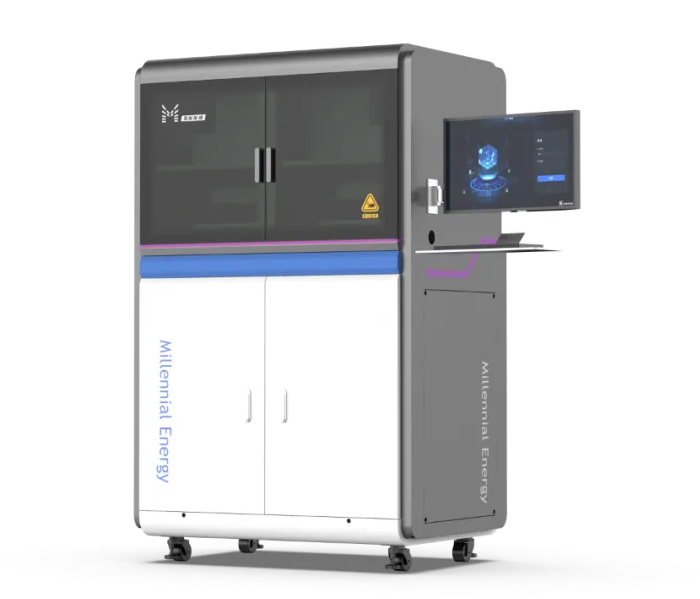
E-mail: market@millennialsolar.com
Millennial Maximum Power Point Tracker uses A+AA+ grade LED solar simulator as aging light source, and provides strong support for the research of perovskite solar cells with its advanced technology and multifunctional design.
· Light source grade: A+AA+, spectral matching grade A+, uniformity grade A, long-term stability grade A+
· Effective spot size: ≥250*250mm (customizable)
· Adjustable light intensity: 0.2sun, 0.5sun, 1sun, 1.5sun, 4 gears
· Independently controllable power: 300-400nm/400-750nm/750-1200nm
Through the measurement of maximum power point tracking (MPPT), the stability and hysteresis problems of perovskite solar cells are solved, and the accuracy of their power output and efficiency evaluation is improved. Millennial Maximum Power Point Tracker is a powerful and comprehensive multi-channel solar cell and component stability testing system tailored for perovskite solar cell researchers. It can perform long-term stability performance tests on multiple groups of cells at the same time.

































































